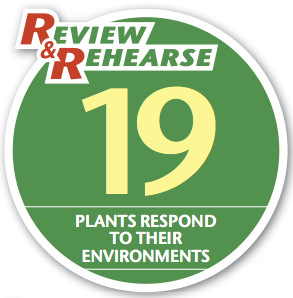
Chapter 19. Chapter 19: Plants Respond to Their Environments
Review & Rehearse

Instructions
Review the visual summaries and answer the essay questions below.
Make sure to enter a brief response that completely answers each question and explains your reasoning. When you click "Submit," you will be provided instant feedback, allowing you to check if your response is correct.
(This activity contains 11 total essay questions. Each new question will be revealed once you complete the preceding question.)
1.

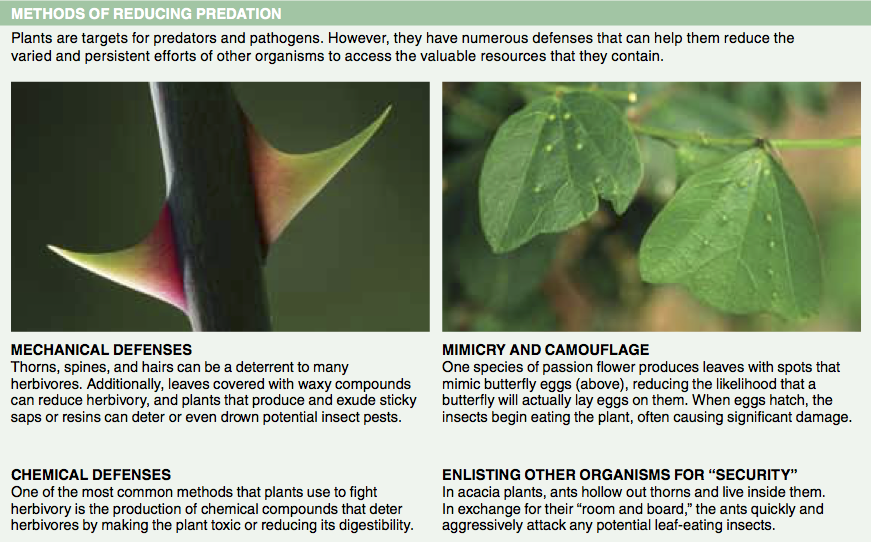
1. Describe two defenses that have evolved in plants to help combat predators.
2.
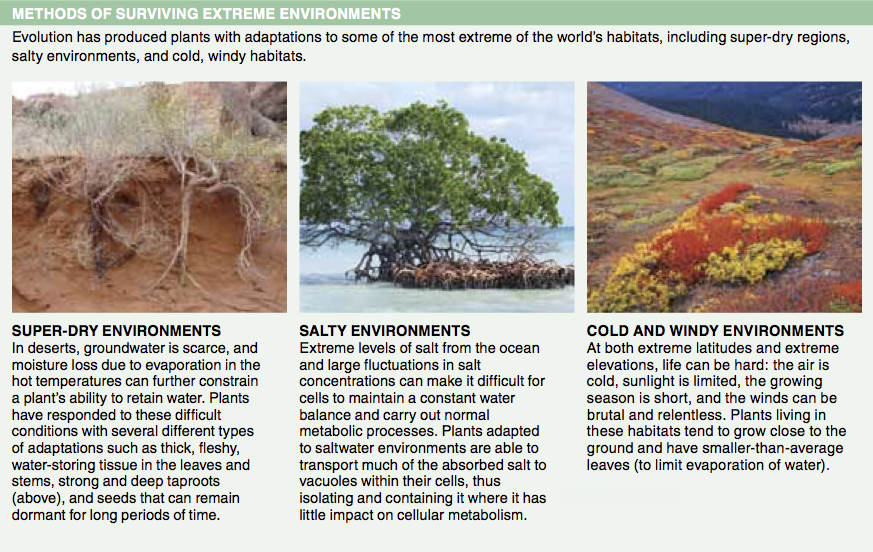
2. In what type of habitat would you expect to find plants growing close to the ground with smaller-than-average leaves?
3.

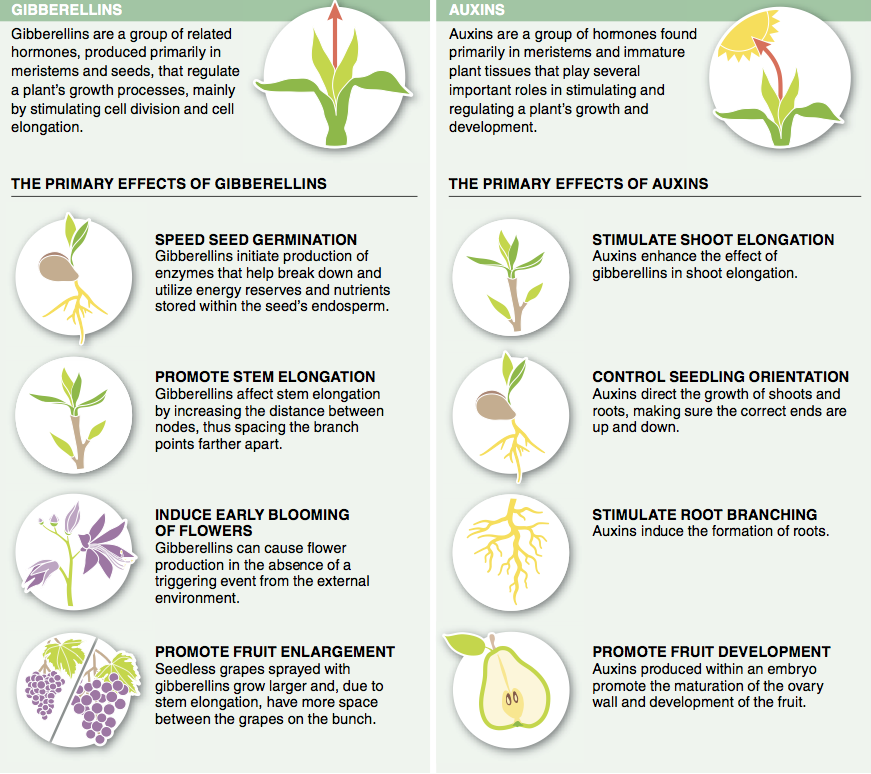
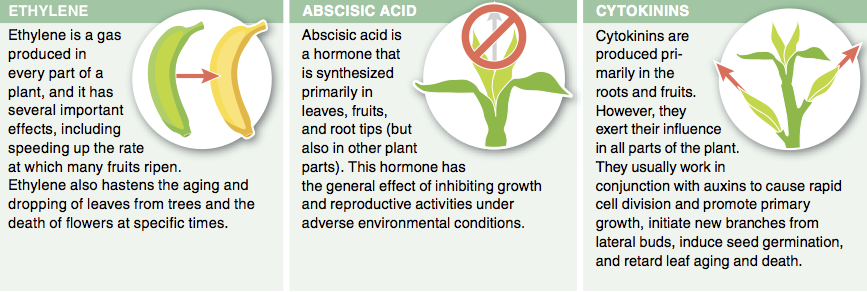
3. Which plant hormone is associated with increasing the speed at which fruit ripens?
4.
4. The term “miracle grow” best suits which plant hormone? Why?
5.

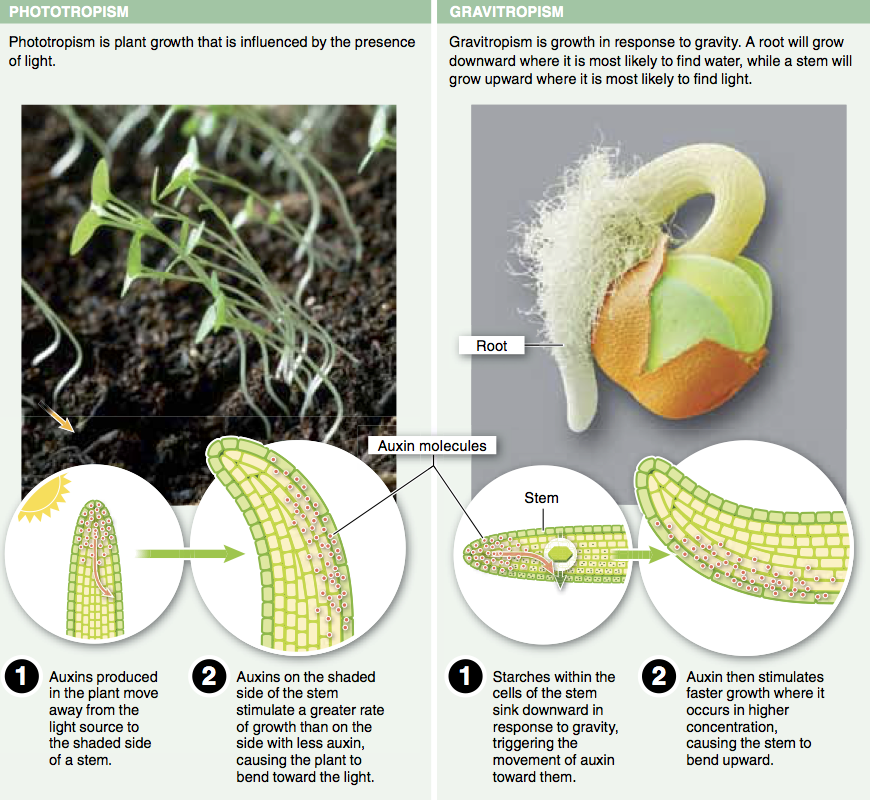

5. What would you expect to happen if you applied auxin to one side of a growing shoot tip?
6.
6. Which plant hormone or group of hormones plays a role in the ripening of fruit picked while it is still green? Why is this information valuable in the agricultural industry?
7.
7. Climbing plants such as ivy are able to wrap around sticks or posts. Describe the growth pattern responsible for this ability.
8.
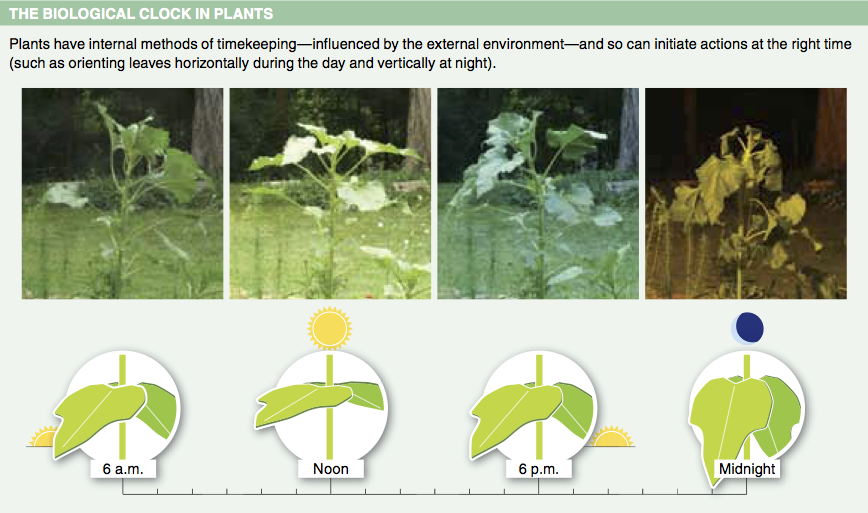
8. Why does it benefit plants to close their leaves or flowers at night time?
9.

9. Why don’t plants rely on temperature or rainfall levels to help determine whether it is spring or summer?
10.
10. What is the effect of a short burst of light during a short-day plant’s dark period?
11.
11. Why might it be problematic to keep poinsettias inside a well-lit house?
Activity results are being submitted...